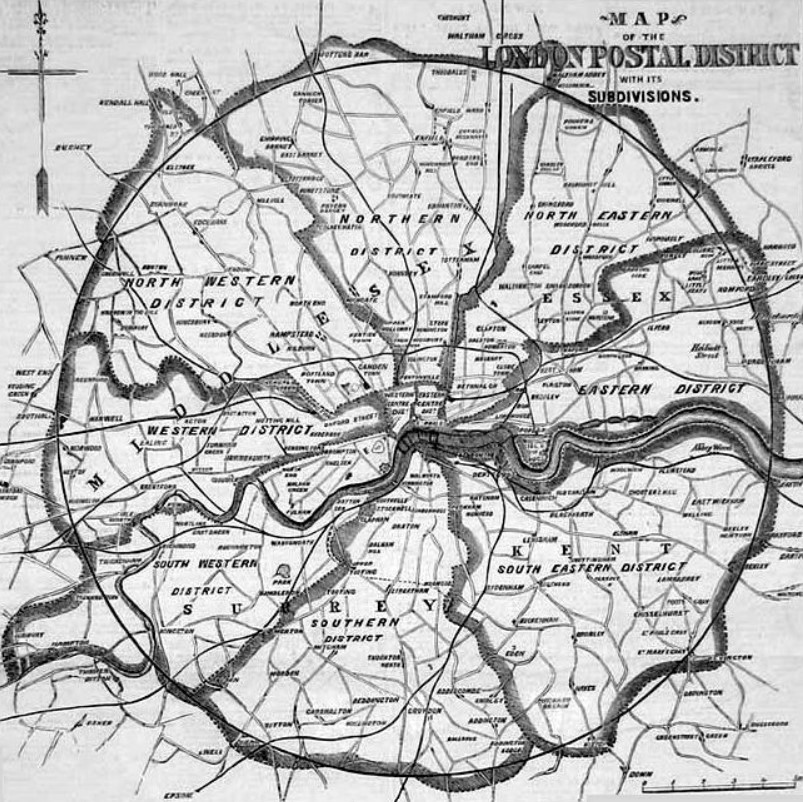In the mid-19th century, the introduction of Sir Rowland Hill’s groundbreaking Uniform Penny Post transformed the United Kingdom’s postal service, making it more accessible and affordable for the general public. As a direct consequence of this successful reform, mail volume surged, creating a pressing need for a more structured and efficient mail organisation system, particularly in the rapidly growing and bustling metropolis of London.
It was during this period of significant change and innovation that the London Postal Districts were conceived. Introduced in 1857-58, this new system divided London into ten distinct postal districts, each assigned a unique letter prefix to facilitate the sorting and delivery of mail within the city. Eastern Central, for example, was designated by the prefix ‘EC’, while Western Central was assigned ‘WC’. These prefixes enabled postal workers to quickly identify the destination of each letter or parcel, making the process of sorting and delivering mail more efficient and streamlined.
Introduction of the London Postal Districts
The introduction of the London Postal Districts represented a pioneering approach to mail organisation that would eventually be adopted across the United Kingdom. London, however, was not the only city in the UK grappling with the challenges of increased mail volume. Other major urban centres, such as Liverpool, Manchester, and Glasgow, were also experiencing a surge in mail traffic, prompting the need for similar systems in these areas.
Recognising the success of the London Postal Districts, the UK postal service expanded the concept to other cities. By the early 20th century, numerous cities across the UK had adopted their own postal district systems, providing a more efficient and organised means of handling mail traffic.
While the establishment of postal districts in London and other major UK cities undoubtedly represented a significant step forward in mail organisation, it was not the ultimate solution to the challenges faced by the postal service. The postal districts were a precursor to an even more sophisticated addressing system, one that would lay the groundwork for the modern UK postcode system we know today.
As the 20th century progressed, the need for an even more accurate and efficient system for organising mail became increasingly apparent. The existing postal districts, while useful, lacked the granularity required to optimise mail delivery in an ever-growing and evolving urban landscape. This pressing need for a more refined system ultimately led to the development of the alphanumeric postcode system, which was first trialled in the city of Norwich in 1959.
The Norwich Experiment
The Norwich Experiment, as it came to be known, proved highly successful, demonstrating that the new alphanumeric postal codes offered an unparalleled level of precision in mail sorting and delivery. Following the success of the Norwich Experiment, the new postcode system was rolled out across the entire country, marking a new era in mail organisation and delivery.
In conclusion, the London Postal Districts were a critical stepping stone in the evolution of mail organisation in the United Kingdom. Their introduction represented an innovative response to the challenges faced by the postal service in the wake of the Uniform Penny Post, laying the groundwork for the development of the modern UK postcode system. As we look back on the history of the UK’s postal service, it is essential to recognise and appreciate the pioneering spirit that led to the creation of the London Postal Districts, a system that not only streamlined mail delivery within the capital but also set the stage for the future of mail organisation across the nation.
Image Credit: https://en.wikipedia.org/wiki/London_postal_district
